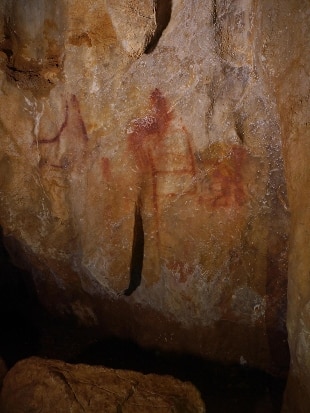Share
22 February 2018Discovered the oldest cave paintings in the world: they are located in Spain and are the work of the Neanderthals, who decorated them at least 64,000 years ago, that is, 20,000 years before homo sapiens. Also find the shells used to mix colors, which date back to 115,000 years ago. The result, which rewrites prehistory, is published in Science and Science Advances, in two researches coordinated by the German Max Planck Institute and they also speak Italian.The Uranio-Thorium radiometric dating technique has made it possible to establish that some artistic objects, with the use of pigments, found in a cave in Spain can be traced back to the Neanderthals, therefore capable of producing objects of symbolic value. These are perforated shells and coloring substances.
Already in 2010 a scientific article had highlighted these presences, which so far had not been precisely dated. The article was from the same international team that included geoarchaeologist Diego Angelucci, from the department of letters and philosophy of the University of Trento, who today with his colleagues published a study in the Science Advances magazine capable of dating those findings between 115,000 and 120,000 years ago, then to Neanderthals.
Coral reefs at risk, ancient Neandertal artists, and the Global Virome Project in our newest issue: https://t.co/UtSwgzfU0d pic.twitter.com/nttND756wR
- Science Magazine (@sciencemagazine) 22 February 2018 Thanks to the use of the Uranium-Thorium dating technique, researchers were able for the first time to provide a more accurate age to these testimonies of the past. Radiometric dating techniques, particularly Uranium-Thorium dating, were performed by Dirk Hoffmann (Max Planck Institute for Evolutionary Anthropology, Leipzig, Germany). They confirmed the thesis that the Iberian Neanderthals were able to produce objects with symbolic meaning. The project, which began in 2006, included the excavation of new Paleolithic sites (Finca Doña Martina and Abrigo de la Boja) and the review of already known sites (Cueva Antón and Cueva de los Aviones).The dating available in 2010 provided only a generic minimum age of over 45,000 years. The uncertainties stemmed from the fact that the technique used, that of Radiocarbon, allows dating samples up to an age of 40-50,000 years ago, but which for such ancient periods often only provides minimum ages.
Angelucci took care of the study of the stratification preserved in the cave and of the data processing, in order to reconstruct the sequence of accumulation of the layers and to verify that they had not been upset or tampered with after their accumulation.
The same Uranio-Thorium dating technique was also used for a parallel and coordinated study (published in the journal Science today, on the cover) conducted by Hoffmann and ZilhÜo on the calcite crusts that cover the paleolithic cave paintings of three Spanish caves: the caves La Pasiega in Cantabria, Maltravieso in Extremadura and Ardales in Andalusia. Dating has revealed that the paintings are older than previously thought: they date back to around 64,000 years ago, that is, 20,000 years before the arrival of Homo sapiens in Europe, then to the Neanderthals.

